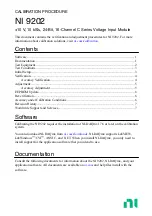
121
second TIM is started and when the second TIM’s Completion Flag goes ON,
the first TIM is started.
00000 TIM 002
TIM 001
TIM 001
00205
00000
00205
1.5 s
1.0 s
1.5 s
1.0 s
Address
Instruction
Operands
00000
LD
00000
00001
AND
TIM
002
00002
TIM
001
#
0010
00003
LD
TIM
001
00004
TIM
002
#
0015
00005
LD
TIM
001
00006
OUT
00205
TIM 002
#0015
TIM 001
#0010
1.0 s
1.5 s
A simpler but less flexible method of creating a flicker bit is to AND one of the
SR area clock pulse bits with the execution condition that is to be ON when
the flicker bit is operating. Although this method does not use TIM, it is in-
cluded here for comparison. This method is more limited because the ON
and OFF times must be the same and they depend on the clock pulse bits
available in the SR area.
In the following example the 1-second clock pulse is used (25502) so that
00206 would be turned ON and OFF every second, i.e., it would be ON for
0.5 seconds and OFF for 0.5 seconds. Precise timing and the initial status of
00206 would depend on the status of the clock pulse when 00000 goes ON.
00000 25502
00206
Address
Instruction
Operands
00000
LD
00000
00001
LD
25502
00002
OUT
00206
5-12-2
HIGH-SPEED TIMER – TIMH(15)
N
: TC number
# (000 through 047 preferred)
Ladder Symbol
Definer Values
SV
: Set value (word, BCD)
IR, AR, DM, HR, LR, #
Operand Data Areas
TIMH(15) N
SV
SV is between 00.02 and 99.99. (Although 00.00 and 00.01 may be set,
00.00 will disable the timer, i.e., turn ON the Completion Flag immediately,
and 00.01 is not reliably scanned.) The decimal point is not entered.
Each TC number can be used as the definer in only one timer or counter in-
struction.
Although TC 048 through TC 511 can be programmed, TC 000 through TC
047 must be used to ensure accuracy if the cycle time is greater than 10 ms.
Limitations
Timer and Counter Instructions
Section 5-12















































